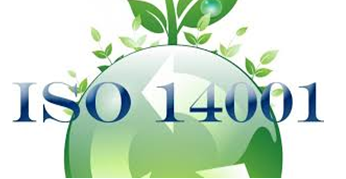
In an era of increasing environmental awareness, organizations are recognizing the importance of sustainable practices. ISO 14001, an international standard for environmental management systems (EMS), provides a framework for organizations to enhance their environmental performance. This article delves into the significance of ISO 14001 training Malaysia, outlining its benefits, implementation strategies, and the role of certified training programs.
Understanding ISO 14001
Importance of ISO 14001 in Malaysia
In Malaysia, environmental concerns are becoming increasingly prevalent due to rapid industrialization, urbanization, and climate change. The Malaysian government has taken significant steps towards environmental protection, such as implementing policies and regulations to mitigate environmental impact. ISO 14001 serves as a vital tool for organizations aiming to align with these national goals and enhance their competitiveness in the global market.
Benefits of ISO 14001 Training
Enhanced Compliance and Risk Management
ISO 14001 training equips participants with the knowledge to navigate complex environmental regulations. This training ensures that organizations are compliant with local and international laws, reducing the risk of fines and legal issues. By understanding the standard’s requirements, companies can proactively manage their environmental risks.
Improved Operational Efficiency
Implementing an effective EMS leads to streamlined operations and resource management. ISO 14001 training teaches organizations how to identify inefficiencies and waste in their processes, ultimately resulting in cost savings. Efficient resource use not only benefits the environment but also enhances the bottom line.
Key Components of ISO 14001 Training
Understanding the Standard’s Structure
ISO 14001 is structured around the Plan-Do-Check-Act (PDCA) cycle, which promotes continuous improvement. Training programs typically cover the following components:
- Context of the Organization: Understanding internal and external factors that affect environmental performance.
- Leadership and Commitment: The role of top management in driving the EMS.
- Planning: Identifying risks and opportunities, establishing environmental objectives, and planning for their achievement.
- Support: Ensuring adequate resources, training, and communication.
- Operation: Implementing processes and managing change effectively.
- Performance Evaluation: Monitoring and measuring performance against objectives.
- Improvement: Continuously improving the EMS to enhance environmental performance.
Assessment and Certification Preparation
A crucial aspect of ISO 14001 training is preparing participants for certification audits. Training programs often include mock audits and assessments, helping organizations identify gaps in their EMS. This preparation is vital for achieving and maintaining certification.
Choosing the Right ISO 14001 Training Provider
Accreditation and Expertise
When selecting a training provider, it’s essential to ensure they are accredited and have expertise in ISO 14001. Look for trainers who have extensive experience in environmental management and a proven track record of successful implementations.
Customization of Training Programs
Every organization has unique needs and challenges. A good training provider will offer customized training programs that cater to specific industries or organizational structures. This customization ensures that participants receive relevant and applicable knowledge.
Implementing ISO 14001 in Malaysian Organizations
Steps for Successful Implementation
- Top Management Commitment: Leadership must demonstrate commitment to environmental management and allocate resources for implementation.
- Initial Review and Gap Analysis: Conduct a review of current practices and perform a gap analysis to identify areas for improvement.
- Development of EMS: Create an environmental policy, set objectives, and develop processes aligned with ISO 14001.
- Training and Awareness: Provide training to all employees to ensure understanding and engagement.
- Monitoring and Evaluation: Regularly monitor environmental performance and evaluate the effectiveness of the EMS.
- Continuous Improvement: Foster a culture of continuous improvement by regularly reviewing processes and seeking opportunities for enhancement.
Conclusion
ISO 14001 training is an essential step for Malaysian organizations striving for environmental excellence and sustainability. By understanding the standard, implementing effective environmental management systems, and committing to continuous improvement, organizations can enhance their compliance, efficiency, and market position. Investing in ISO 14001 training not only benefits the organization but also contributes to a more sustainable future for Malaysia as a whole. As environmental challenges continue to grow, the need for effective training and robust environmental management practices will become increasingly critical.